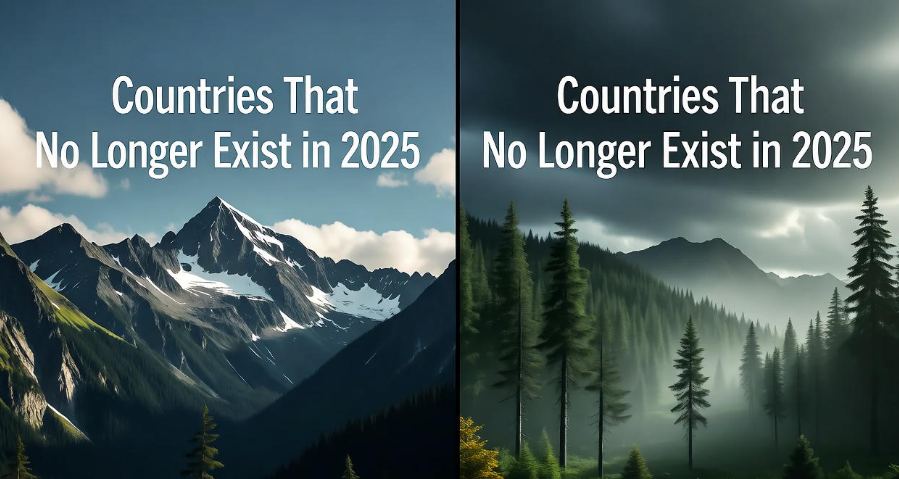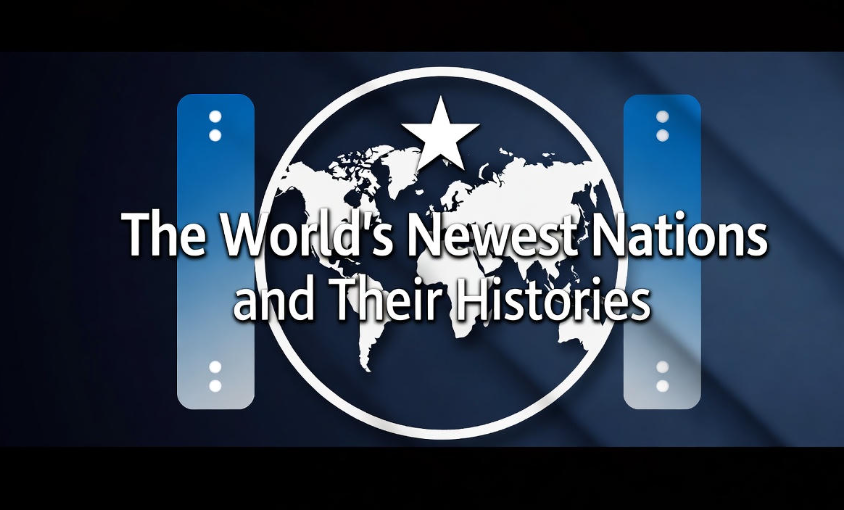The world map we see today is very different from what it looked like a century ago. Countries come and go due to wars, political changes, economic collapse, or mergers. Some of these nations vanished quietly, while others disappeared in dramatic ways that shook the world. Let’s explore some of the countries that no longer exist in 2025.
Yugoslavia
Once a powerful country in Southeast Europe, Yugoslavia was made up of six republics: Slovenia, Croatia, Bosnia and Herzegovina, Montenegro, Serbia, and Macedonia. In the 1990s, Yugoslavia split apart after a series of wars and ethnic conflicts. By the early 2000s, the country completely ceased to exist. Today, its former territories are independent nations, each with their own governments and cultures.
East Germany
East Germany, officially the German Democratic Republic (GDR), was created after World War II and existed from 1949 to 1990. It was under Soviet influence, while West Germany was allied with the West. In 1990, East and West Germany reunited, making East Germany a part of the modern Germany we know today. The Berlin Wall, which divided East and West, became a symbol of this historic reunification.
Czechoslovakia
Czechoslovakia existed from 1918 to 1992. After decades of coexistence, political disagreements led to a peaceful split into two countries: the Czech Republic and Slovakia. This event, often called the Velvet Divorce, was unusual because it happened without violent conflict—a rare case of a country dividing peacefully in modern history.
Soviet Union (USSR)
The Soviet Union was one of the most influential superpowers of the 20th century, consisting of 15 republics, including Russia, Ukraine, and Kazakhstan. Due to economic struggles, political turmoil, and nationalist movements, the USSR dissolved in 1991. Its territories became independent countries, reshaping global politics and creating new opportunities and challenges for the post-Soviet world.
Ottoman Empire
The Ottoman Empire was once a massive empire spanning parts of Europe, Asia, and Africa. By World War I, the empire weakened significantly. In 1922, it officially ended, and modern Turkey emerged under the leadership of Mustafa Kemal Atatürk. The fall of the Ottoman Empire marked the end of a centuries-old political and cultural legacy in the Middle East.
Gran Colombia
Gran Colombia existed in the early 19th century and included territories of present-day Colombia, Venezuela, Ecuador, and Panama. It was created after independence from Spain but fell apart due to political differences and regional rivalries. By 1831, Gran Colombia had dissolved into separate nations, shaping South America as we know it today.
Prussia
Prussia played a crucial role in European history, particularly in uniting Germany in the 19th century. It officially ceased to exist after World War II when its territories were divided among Poland, the Soviet Union, and Germany. Despite its disappearance, Prussia’s legacy still influences German culture, military, and politics.
East Pakistan / West Pakistan
East Pakistan was part of Pakistan from 1947 until 1971. Due to political tensions and cultural differences with West Pakistan, East Pakistan fought a war of independence and became Bangladesh. This transformation reshaped South Asia and stands as one of the most significant geopolitical changes of the 20th century.
Rhodesia
Rhodesia existed in Southern Africa and was named after British colonialist Cecil Rhodes. It declared independence in 1965 but faced international sanctions and internal conflict. In 1980, Rhodesia officially became Zimbabwe, ending decades of political struggle and colonial rule.
Table: Some Former Countries and Their Successors
| Former Country | Years Existed | Successor(s) / Modern Country | Key Reason for Disappearance |
|---|---|---|---|
| Yugoslavia | 1918–2003 | Slovenia, Croatia, Bosnia & Herzegovina, Montenegro, Serbia, North Macedonia | Civil war, ethnic conflict |
| East Germany | 1949–1990 | Germany | Reunification |
| Czechoslovakia | 1918–1992 | Czech Republic, Slovakia | Peaceful political split |
| Soviet Union | 1922–1991 | Russia, Ukraine, Kazakhstan, etc. | Economic collapse, nationalism |
| Ottoman Empire | 1299–1922 | Turkey | Military defeat, modernization |
| Gran Colombia | 1819–1831 | Colombia, Venezuela, Ecuador, Panama | Political differences |
| Prussia | 1525–1947 | Germany, Poland, Russia | Post-WWII territorial division |
| East Pakistan | 1947–1971 | Bangladesh | Independence war |
| Rhodesia | 1965–1980 | Zimbabwe | Independence, end of colonial rule |
Why Do Countries Disappear?
Countries disappear for many reasons. Some are due to wars, others due to political disagreements or economic collapse. Sometimes, countries merge to become stronger, and sometimes they split because of cultural, ethnic, or political differences. It’s a reminder that borders are not permanent and that history is always moving forward.
Impact on People
When a country disappears, its people often face identity challenges. For example, citizens of the Soviet Union had to adapt to new national identities. Similarly, East Germans adjusted to new laws, currencies, and lifestyles after reunification. These changes affect culture, education, politics, and even everyday life, making history very personal.

Modern Lessons from Vanished Countries
Studying countries that no longer exist can teach us many things:
-
Political stability is fragile.
-
Cultural differences can make or break nations.
-
Peaceful splits are possible (like Czechoslovakia).
-
Wars and conflicts have long-term consequences.
FAQs
Q1: Can countries disappear in the future?
Yes, countries can disappear due to war, economic collapse, or voluntary mergers. Modern examples include South Sudan, which gained independence recently, or regions seeking independence like Catalonia.
Q2: What was the largest country to disappear?
The Soviet Union was the largest country to disappear, covering over 22 million square kilometers and including 15 republics.
Q3: Are there countries at risk of disappearing now?
Yes, some small nations are at risk due to climate change, economic issues, or political unrest. Examples include island nations threatened by rising sea levels.
Q4: Do people lose citizenship if their country disappears?
Usually, successor states provide new citizenship, but there can be transitional challenges. For instance, after the Soviet Union dissolved, people had to apply for citizenship in the newly formed countries.
Q5: Is disappearing countries the same as colonies gaining independence?
Not exactly. Colonies gaining independence are new countries forming, whereas disappearing countries refer to existing nations that cease to exist due to mergers, splits, or collapse.
Conclusion
Countries vanish, but their legacies remain. They shape culture, politics, and history long after they disappear. From Yugoslavia to the Soviet Union, these nations remind us that borders are not permanent, and history is always changing.




